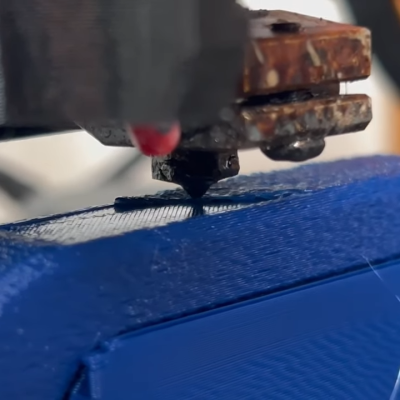Three-axis 3D printing has been with us long enough that everybody knows the limitations, but so far, adding extra axes has been very much a niche endeavor. [Daniel] at Fractal Robotics wants to change that, with the Fractal 5 Pro 5-axis printer, and its corresponding Fractal Cortex slicer.
The printer looks like an extra-beefy Voron from a distance, which is no surprise as [Daniel] admits to taking heavy inspiration from the Voron Trident. The Fractal 5 shares a core-XY geometry with the Voron, using beefy 30 mm x 30 mm extrusions. Also like the Voron, it runs Klipper on a Raspberry Pi hiding in the base. Under a standard-looking printhead using a BondTech extruder and E3D volcano hotend, we find the extra two axes hiding under the circular build plate. The B axis is a gantry that can pivot the build plate assembly a full 90 degrees; the A axis spins the plate without limit thanks to the slip rings built into the design.
The extruder may look fairly normal, but it has actually been designed very carefully to allow the nozzle to get as close as possible to the build plate when the B-axis is at 90 degrees. It looks like the E3D hotend is actually the limiting factor there, which gives plenty of design freedom when planning prints in the accompanying Fractal Cortex slicer.
Continue reading “Open Source 5-Axis Printer Has Its Own Slicer”


















